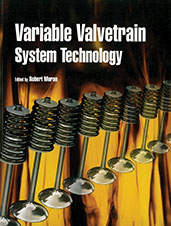Technical Paper
Vehicle Engine Aftertreatment System Simulation (VEASS) Model: Application to a Controls Design Strategy for Active Regeneration of a Catalyzed Particulate Filter
2005-04-11
2005-01-0970
Heavy-duty diesel engine particulate matter (PM) emissions must be reduced from 0.1 to 0.01 grams per brake horsepower-hour by 2007 due to EPA regulations [1]. A catalyzed particulate filter (CPF) is used to capture PM in the exhaust stream, but as PM accumulates in the CPF, exhaust flow is restricted resulting in reduced horsepower and increased fuel consumption. PM must therefore be burned off, referred to as CPF regeneration. Unfortunately, nominal exhaust temperatures are not always high enough to cause stable self-regeneration when needed. One promising method for active CPF regeneration is to inject fuel into the exhaust stream upstream of an oxidation catalytic converter (OCC). The chemical energy released during the oxidation of the fuel in the OCC raises the exhaust temperature and allows regeneration.

